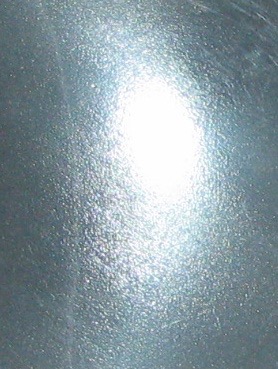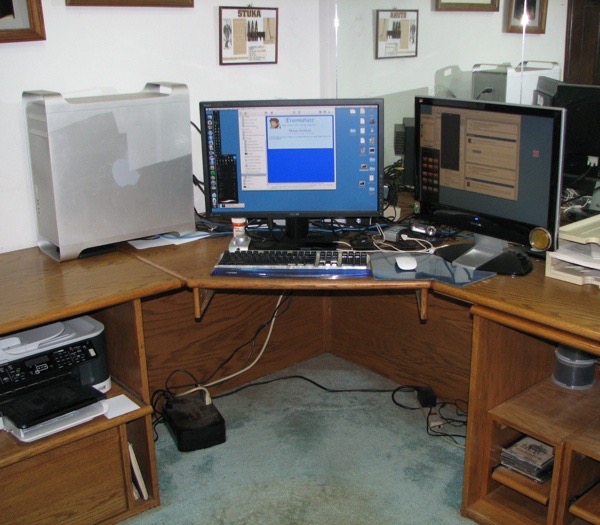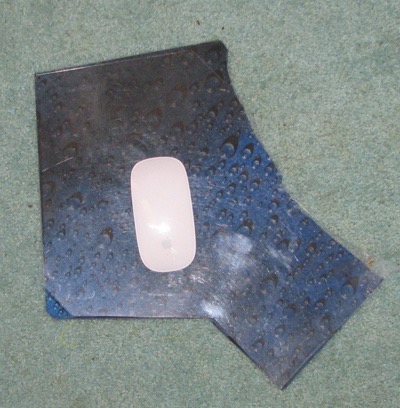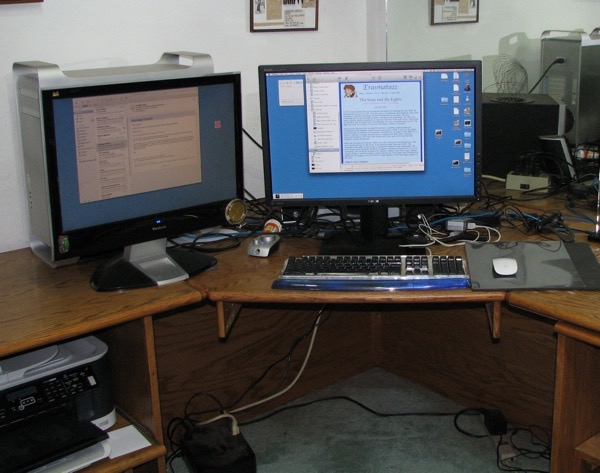Today I had occasion to research the efficacy of various surfaces for use with my Apple Magic Mouse. Perhaps you have seen the advice columns that assert that just about any surface will do just fine, so long as it’s flat and nonreflective. That’s a good approximation of the the truth, but actually there are two fundamental considerations involved in assessing the utility of a mouse surface.
Friction
An ideal mouse surface is frictionless; the mouse glides effortlessly across the surface without the slightest resistance. This is an ideal, of course, but there are differences between surfaces. The old cloth mousepads that were so useful for the old “dead trackball” mice are exactly wrong here. Their value was the high friction they offered that insured that the mouse ball would move without slippage. But that friction made mouse maneuvering more work. I’m sure that, had I worked that way long enough, I would have ended up with a right arm like Popeye’s.
Texture
A laser mouse works by sensing the texture of the surface on which it glides. No texture means no function. A glass surface has zero texture, so a laser mouse doesn’t work on a glass surface.
Six of one minus half a dozen of the other
Here’s the problem: the texture of a surface determines its smoothness. A highly textured surface (such as rubber) has a lot of friction; a perfectly smooth surface (such as glass) has zero texture. It would seem, then, that we must make a trade-off between friction and texture.
Nevertheless, I thought that it might be possible to find a surface that would not force me too hard onto the horns of that dilemma. So I gathered together lots of different surfaces and tested them. I carried out two tests, one of which proved in practice to be useless. The useful test was for smoothness. I laid the Magic Mouse down sideways on the surface and tilted it upwards until the mouse began to slip downwards. The angle at which it started to slip was concomitant with the smoothness of the surface. The shallower the angle of first slippage, the smoother the surface.
I used this test on lots of surfaces: silk, Tyvek, polished furniture wood, plain printer paper, glossy photo paper, matte photo paper, Corian, brushed aluminum, a number of different plastics, and a ceramic tile. The hands-down winner came as a surprise.
Recall the most recent experience you had with a product encased in a heavy plastic that must be cut apart to free the product. That plastic is infuriatingly tough; I have always thought that they should put dieting foods inside such cases in the expectation that the user will expend more calories getting the package open than the food contains.
That’s the stuff. I just happened to have a big sheet of it from something I bought years ago. I have a strange habit of squirreling away odd materials that might just come in handy someday, and this single case justified all my squirreling. The stuff is so smooth that the mouse began slipping at an angle of only 8º — most other materials needed 15º to 20º. It feels silky smooth in use, too.
But could such a material provide enough texture for the mouse to work? Yes! Here’s a photograph showing how the surface reflects a bright light at a 45º angle:

Note the graininess along the borders of the bright spot. That graininess does not come from the light or the reflection: it is introduced by the plastic itself. Something about this plastic gives it an internal optical texture! The result is super-slick. To prevent it from slipping, I placed it on top of a rubberized mat.
The Saga Continues
But I wasn’t yet done. My work desk sits in a corner of my office:

As you can see, the Mac is on the left, the main display and keyboard face directly into the corner, and the secondary monitor is on the right. The mouse is also on the right; this means that there’s very little space available for the mouse surface. I cut an oddly shaped pieces of mouse-surface plastic and rubber mat to fit into the available space:

Then came that moment of wild inspiration, of vaulting creativity: I asked, “Why must the second monitor sit on the right side of the main monitor? Why couldn’t it be placed on the left side?”
As it happens, there were perfectly good reasons for this arrangement when I first set up my desk fifteen years ago. But those reasons have long since evaporated, and yet I retain the old arrangement. This is a perfect example of the way that some ideas get so set in our minds that we are blind to their flaws. It took me five minutes to reverse the monitor arrangement and rearrange all the wiring. The result looks like this:

and I now have many microhectares of space for my mousing around.
